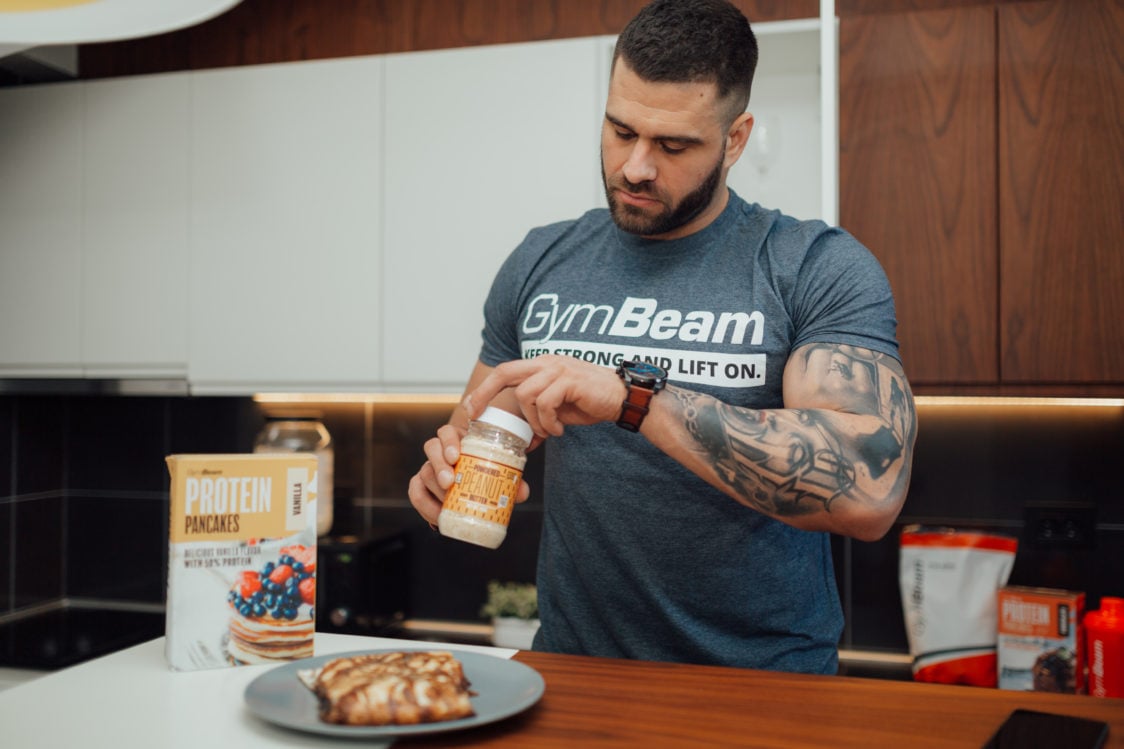Table of Contents
Ladies, there is only a thin line between body fat reduction and muscle mass increase. Many bodybuilding and fitness articles aimed at men often say that you need to get bulky if you want to gain muscle mass. However, exactly this is not a goal of most women (of course, there is an exception to every rule).
You should support the muscle mass growth if you want to burn fat. You need to eat right and make smart choices regarding your nutrition to feed your muscles and make them grow. But diet alone is not enough. If you want to maximize your results, try combining a strength training with a high intensity cardio. Look at 6 most effective tips that can help you overcome the thin line between the muscle mass formation and fat reduction.
1. INCREASE PROTEIN INTAKE
Don’t be afraid to consume more protein! You should consider increasing your daily intake of protein to 1.5 or 2 grams of proteins per 0.5 kg body weight. Yes, that’s right!
You should get to a level of higher protein intake distributed evenly during whole day to help you protect your muscle mass. If there are amino acids floating in your organism, your body will feel it and it will not need to break down muscle tissue to gain them. How much is enough? It can be around 300 grams for a healthy 68 kg woman.

Besides, a recent study has shown that the consumption of recommended daily intake of proteins (0.36 g per 0.5 kg body weight) 5 times a day has no negative impact on body fat storage. [1]
What is more, in case of diet with high amount of proteins, a positive impact on the number of calories burnt during the day has been proven. This externalizes as an increase in amount of calories burnt by means of digestive process, absorption and nutrients distribution, also called Thermic Effect of Food (TEF) . [2]
Thermic Effect of Food (TEF) is a rate of energy spent in digestion. TEF is approximately 10%, so if we take 3000 kcal from food, about 300 kcal is consumed by heat through the processes of absorption, digestion and food storage.
2. TRAIN FOR MUSCLE MASS FORMATION, NOT FOR FAT LOSS
Spending time in doing endless circular trainings using light weights with high number of reps is not the best way to secure the muscle mass growth. Instead of that, try focusing on complex movements, such as squats, deadlifts, bench presses and lat pulldowns. These movements enable you to lift heavier weights and stimulate most of your body muscle mass which is the reason why they should be the basis of each training. Focus on weight increase with which you can gradually do for 5-8 reps.

You can always add exercises with a high number of reps, but you should do them with weight with which it is difficult to finish 15-20 reps.
Combination of a difficult workout and workout with a high number of reps is perfect for muscle mass growth. [3]
You might be interested in these products:
3. REDUCE THE INTAKE OF CARBOHYDRATES
You knew it will come, didn’t you? Yes, you should reduce the intake of carbohydrates – not completely, but to the extent that they are effectively used by your body. Many of us have a real problem when it comes to carbohydrates and this is the reason why the obesity epidemic is a big problem nowadays.
You should consume most of carbohydrates in time when it will bring you the most benefits: two hours before workout and immediately after workout. The rest of your carb intake during the day should come from vegetables with a high amount of fiber. Vegetable can help you sustain energy under control and avert hunger.

A good starting point is to focus on 1.5 g carbs per 0.5 kg body weight during whole day (or 1 gram per 0.5 kg, in case you are obese). Of course, the amount of carb intake is also influenced by whether you exercise pn that day and how much. On a day without training, try to reduce the carb intake to 0.75-1.0 gram per 0.5 kg of body weight.
4. CONSUME HEALTHY FATS
Many women tend to drastically reduce their intake of fats in order to reduce their body fat. As a result, they not only lose weight, but they also begin to lose their hair, as well as the beauty of their nails and skin. Fats play an important role in maintaining the optimal structure of cells and hormonal level and they are crucial for supporting the environment for muscle formation. Moreover, they play a role in how full you feel to be.
Try to consume about 0.5 grams of fat for every 0.5 kg of your body weight every day. That means that woman with 68 kg body weight daily should consume 68 grams of fat. Make sure you include a variety of resources to benefit from different types of fat (omega-3 and omega-6 fatty acids, monounsaturated and saturated fats).
Here are some examples of healthy fats: salmon, sardines, walnuts, flax, Chia seeds, macadamia nuts, avocado, olive oil, hemp oil, egg yolks and coconut oil.
5. CONSUME A MODERATE AMOUNT OF CALORIES
If you want to skate on thin ice of muscle formation while burning fat, it is necessary to find your caloric “happy medium”. You need to consume enough calories that will serve as a muscle building fuel while burning fat.
Look at the recommendation for each of macronutrients to see how they work together:
| Proteins | 1,5 | 4 | 900 |
| Carbohydrates | 1,5 | 4 | 900 |
| Fat | 0,5 | 9 | 675 |
Sample of macronutrients and calories for a 68 kg woman
Remember, you are not on a diet. You are trying to increase your muscle mass while burning fat. A woman who is about to do her best at gym needs the right balance of macronutrients and enough calories to boost her efforts in muscle mass formation and fat loss. According to that are set also these recommendations.

6. USE CARDIO TO BURN FAT, NOT CALORIES
One of the biggest mistakes people do when they are trying to burn body fat is doing a long cardio workout. This does work in case of calories burning, but it can also get you to a caloric deficit when your body starts preferentially burning muscle tissue over body fat. Instead of that, try to do a high intensity interval training (HIIT) as the primary form of your cardio workout. Why? It has been proven that while doing the HIIT, the body sustains the muscle mass and uses fat as its fuel at the same time. And that is a winning combination!

After a 3 to 5-minute warm up, do your first interval by bending over backwards for 60 seconds. Then, give yourself some time to regenerate with a break until your heartbeat frequency returns to a normal condition, which should last 2-4 minutes. Now you are ready to work at full speed like a bat out of hell. Otherwise, your results will be disappointing.
HIIT is a very thankful training for your body, but don’t try to do it every day! Do it about 1-3 times a week at best. If you feel that HIIT is taking your energy during the strength training, cut it out.
What do you think about these tips? Share with us your opinion in the comments below and of course, if you liked this article, you can support it by sharing.
[1] Antonio, J., Peacock, C. A., Ellerbroek, A., Fromhoff, B., & Silver, T. (2014). The effects of consuming a high protein diet (4.4 g/kg/d) on body composition in resistance-trained individuals. Journal of the International Society of Sports Nutrition, 11(1), 19.
[2] Halton, T.L. & Hu, F.M. (2004). The Effects of High Protein Diets on Thermogenesis, Satiety and Weight Loss: A Critical Review. Journal of the American College of Nutrition, 23(5), 373-385.
[3] Schoenfeld, B. J. (2010). The mechanisms of muscle hypertrophy and their application to resistance training.The Journal of Strength & Conditioning Research, 24(10), 2857-2872.
[4] Talanian, J. L., Galloway, S. D., Heigenhauser, G. J., Bonen, A., & Spriet, L. L. (2007). Two weeks of high-intensity aerobic interval training increases the capacity for fat oxidation during exercise in women. Journal of Applied Physiology, 102(4), 1439-1447.
[5] Wilson, J. M., Marin, P. J., Rhea, M. R., Wilson, S. M., Loenneke, J. P., & Anderson, J. C. (2012). Concurrent training: a meta-analysis examining interference of aerobic and resistance exercises. The Journal of Strength & Conditioning Research, 26(8), 2293-2307.

